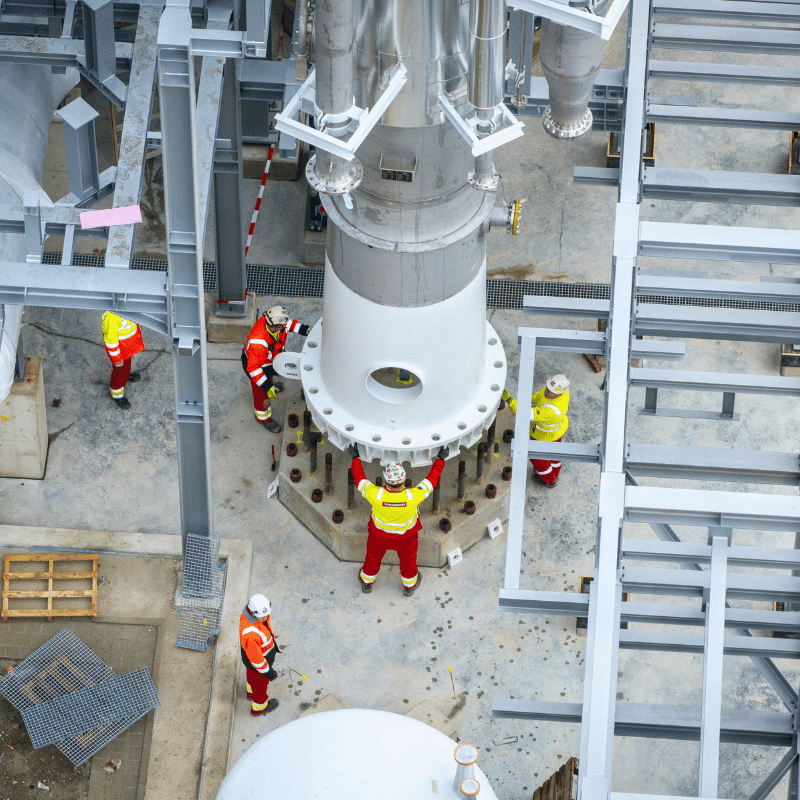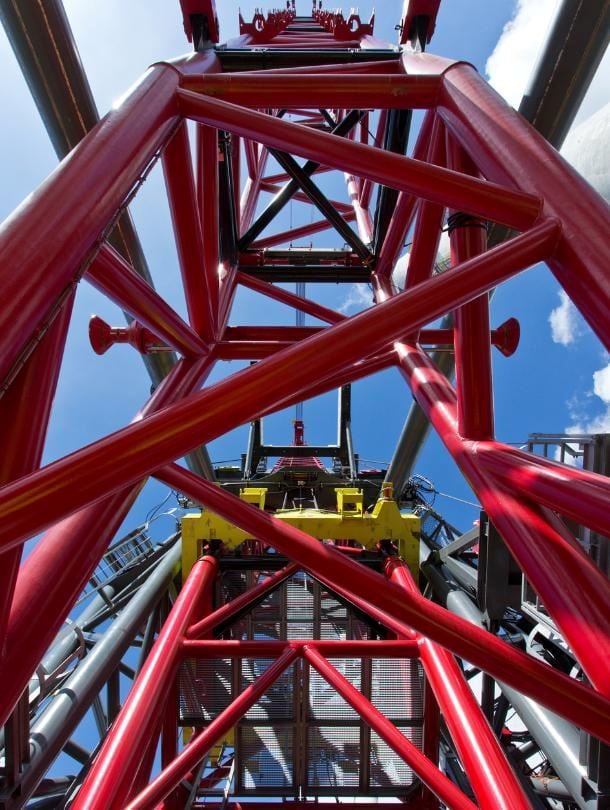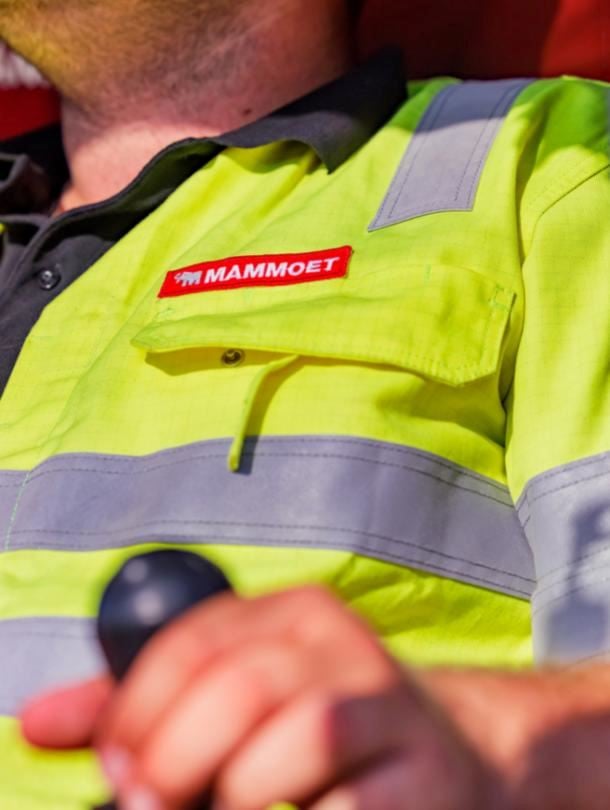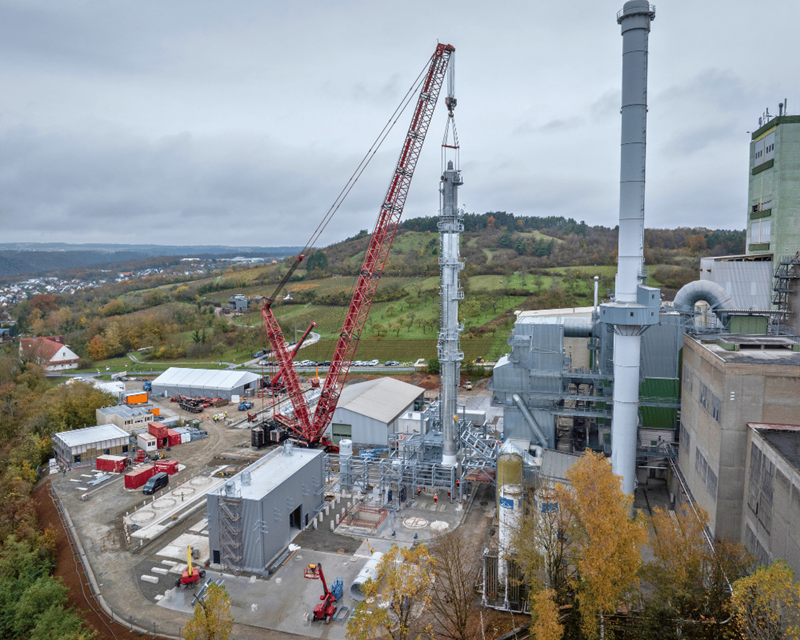
Sector:
Case study
Civil Engineering
Expertise:
Crane lifting
Heavy lifting
Installation
Benefits:
Increased safety
Optimized schedule
Flexible operations
Sustainability
Location:
Germany
3D engineering enables efficient and safe operations in confined spaces
Mammoet is helping the industry to decarbonize by providing safe and efficient solutions for moving and installing heavy objects. This was the case for the construction of the first large-scale Carbon Capture and Utilisation (CCU) plant for the cement plant at the Lengfurt site of Heidelberg Materials - one of the world's largest manufacturers of building materials.
Due to its engineering expertise and many years of experience, Mammoet was requested by Linde Engineering to develop a lifting and installation concept for various large components.
Early involvement facilitates efficient planning
The confined space and many different contractors required precise planning of workflows, interfaces, and construction progress. A feasibility study was conducted a year before the start of the execution, in which various solution options were analyzed and examined in detail.
Using a 3D model of the existing cement plant, Mammoet's team was able to leverage its own engineering platform, Move3D, to visualize the complex processes, space requirements, and potential interfering edges at the confined construction site. This visualization provided all parties involved with a better understanding of the planned moves and made coordination easier.
The use of a 750t crawler crane proved to be the most flexible and efficient method of lifting and installing large components safely and on time at the confined construction site. Thanks to three-dimensional planning, the crawler track for the crane could be kept as small as possible, minimizing the impact of lifting operations.
Mammoet's concept included the delivery of the large components to the construction site, the planning of areas for pre-dressing within the swing radius of the crawler crane, as well as the crane setup and heavy lifts.
Through early involvement, Mammoet's team was able to provide valuable recommendations for adapting the layout of the CCU plant to the requirements of the installation. Additionally, the space requirements were integrated into the overall construction site logistics. This later enabled a safe, efficient, and smooth execution, saving the customer time and costs.
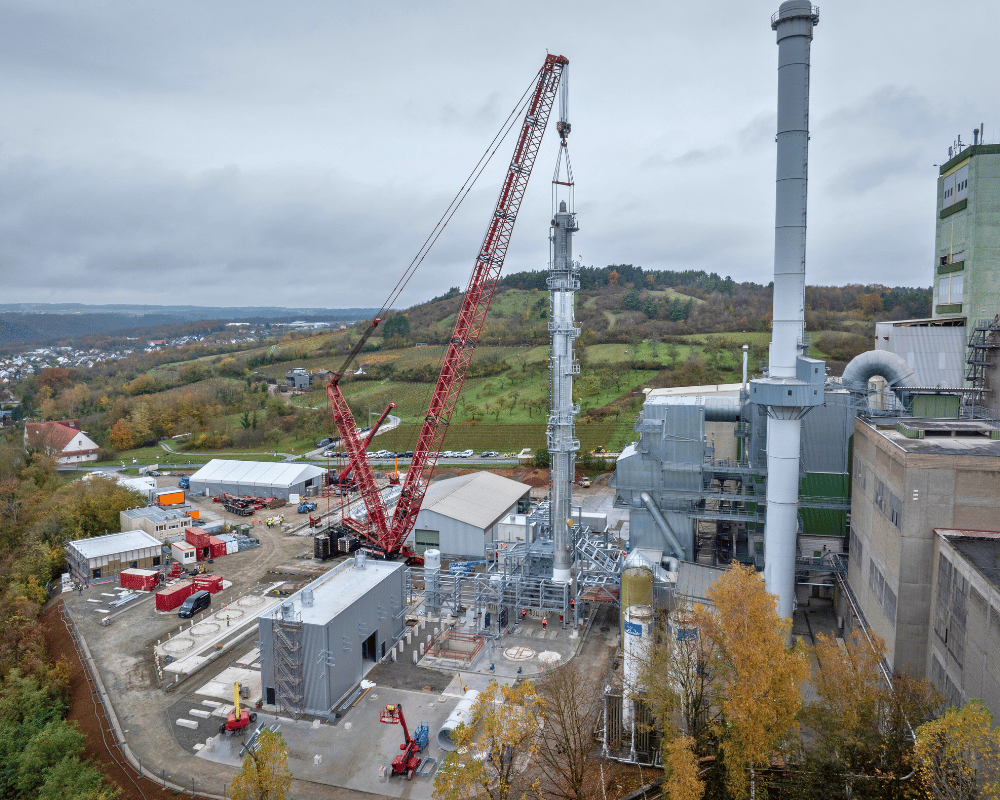
Safe installations with a flexible crawler crane solution
First, the 100t absorber column was erected on the pre-dressing area using a tandem lift. The load was swung almost 180 degrees on the hook of the crawler crane and moved approximately 20m to the installation position. There, the column had to be carefully guided behind a building before it could be positioned, aligned, and bolted onto the foundation in the steel structure.
Due to the 55m length of the absorber column and the high complexity of the lifting process, this was the most challenging heavy lift.
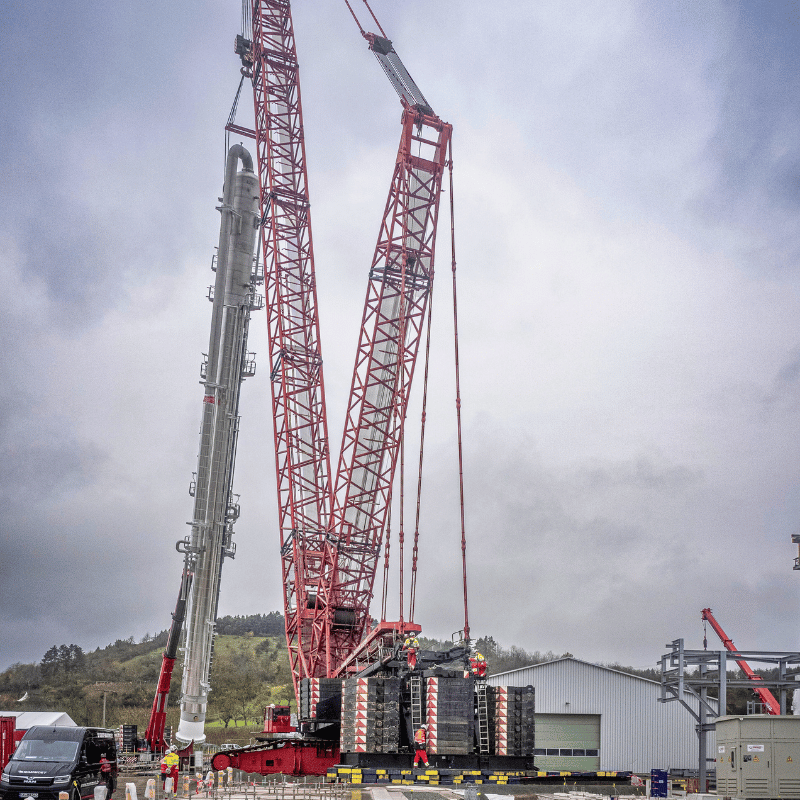
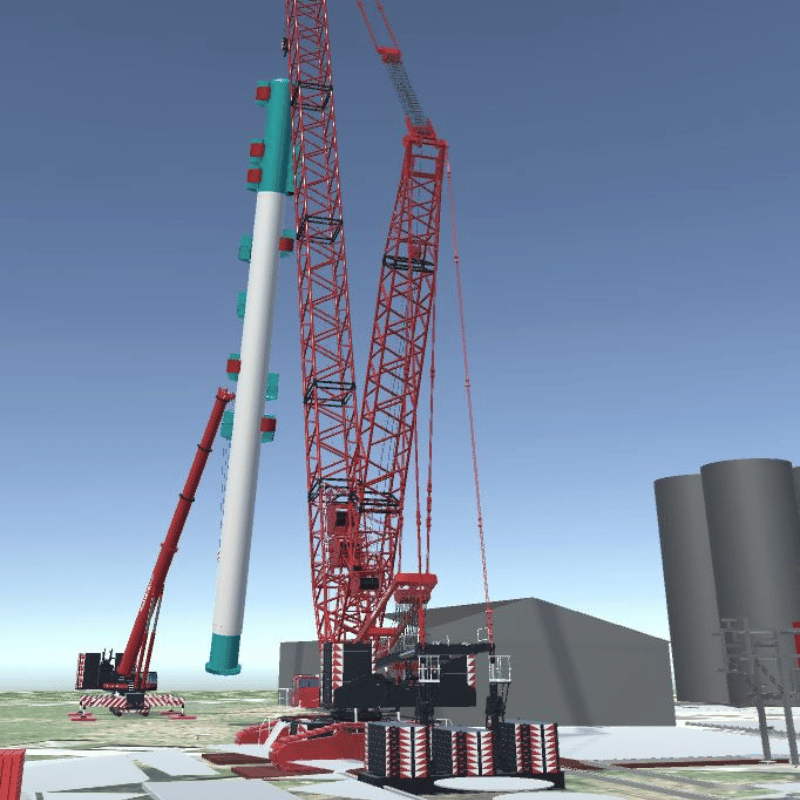
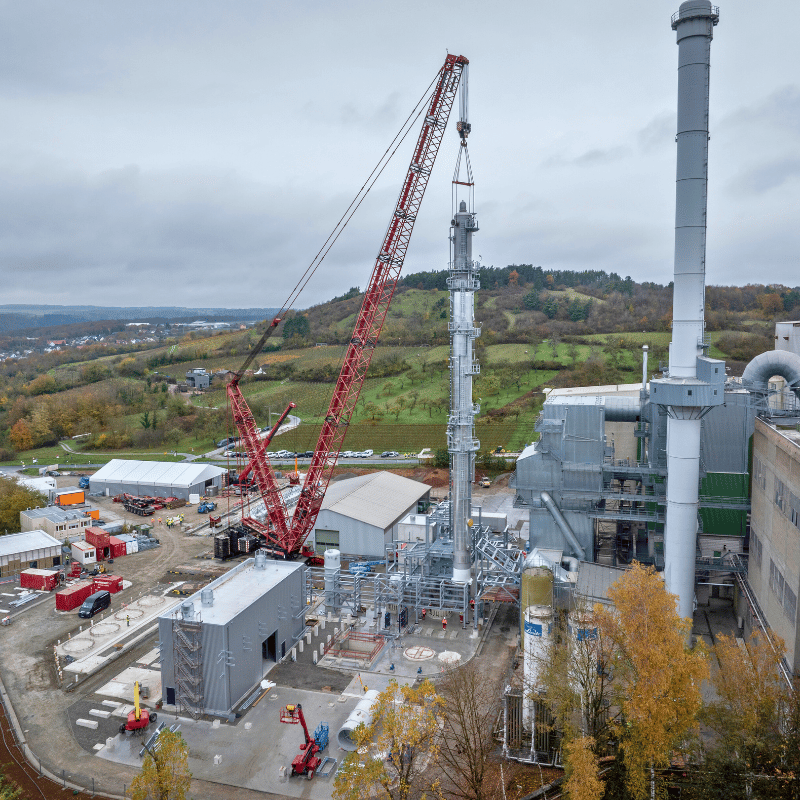
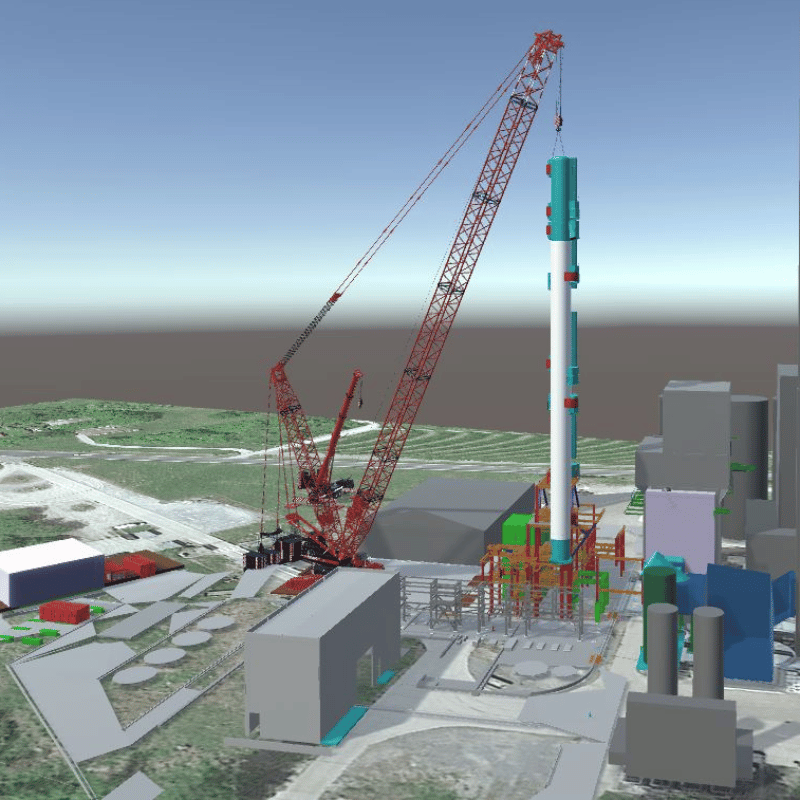
Following this, the 67t stripper column, four tanks each weighing 72t, and finally, the 178t heat exchanger were installed.
Mammoet's crawler crane solution offered several crucial advantages. The crawler crane was flexible enough to safely lift loads of varying sizes and weights over long distances. So, intermediate transport on the construction site could be avoided. To allow for the pre-installation and parallel construction of the steel structure, the configuration of the crawler crane was changed shortly before the project began. This adjustment saved additional time.
The early involvement of Mammoet, 3D engineering, close supervision of the execution by the planning engineers on-site, as well as the open, solution-oriented, and trustful collaboration significantly contributed to a successful project.
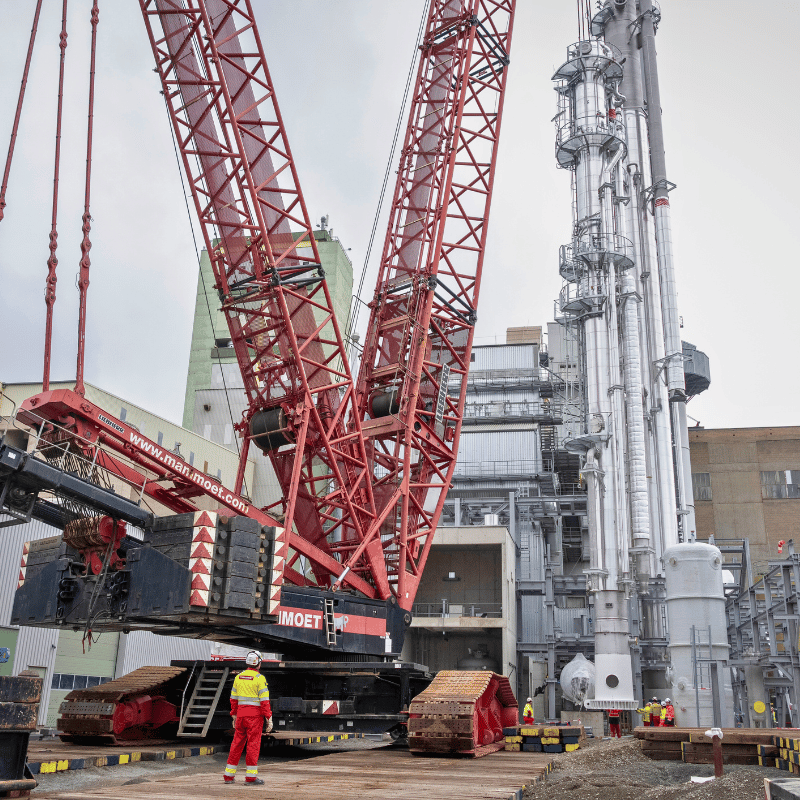
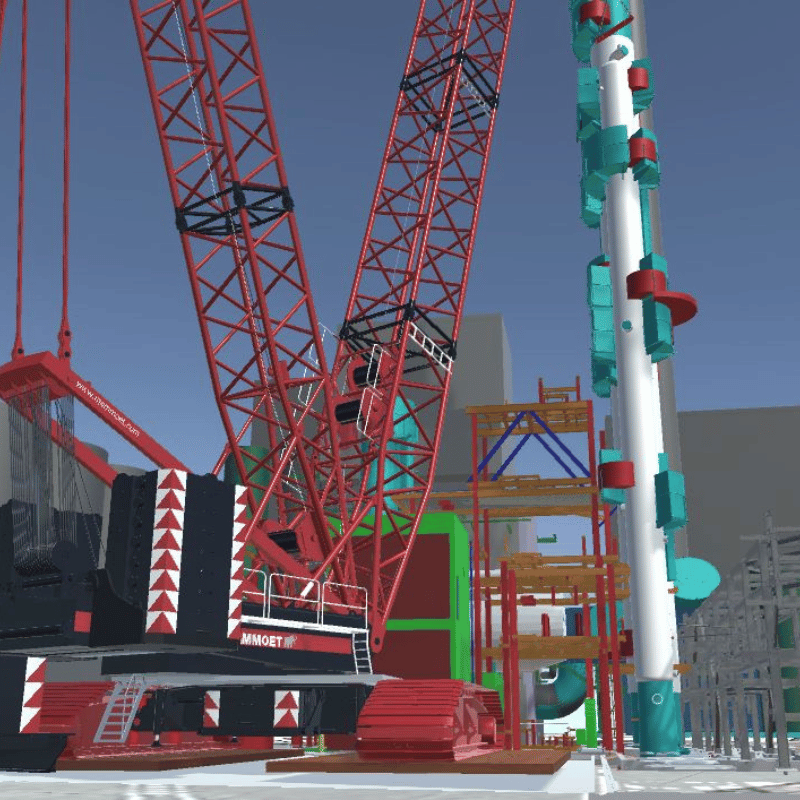
More information on Cap2U
Under the name ‘Capture-to-Use’ (Cap2U), Heidelberg Materials and Linde have established a joint venture for the construction and operation of a carbon dioxide capture and liquefaction plant, which is currently being built on the site of the Lengfurt cement plant. The plant is being planned and built by Linde Engineering.
